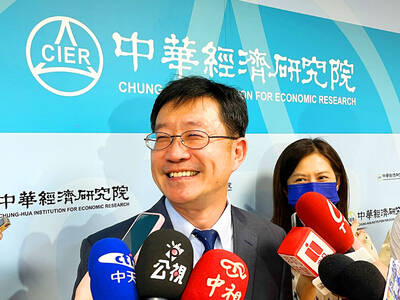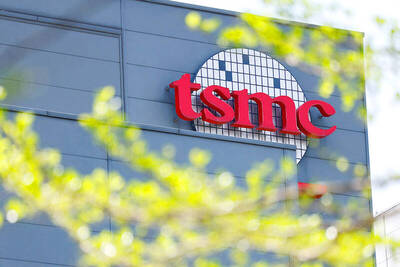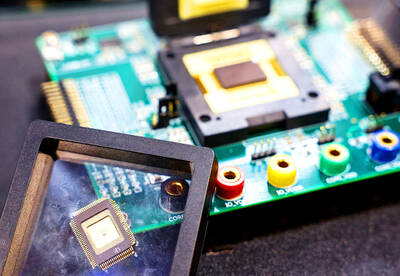Taipei Times (TT): What is it about India that attracts Taiwanese businesses?
Ong Wenchyi (翁文祺): First of all, the international business community has long kept its interest in the Indian market — one of the so-called BRIC countries [Brazil, Russia, India and China]. Plus, coverage of Indian affairs in Taiwanese media is on the rise. And gradually, Taiwanese businesses, especially those of small and medium-sized [enterprises] before big companies, have come to the realization themselves that the Indian market, albeit difficult to tap into, is an important market.
Most of the businesses [that have entered the Indian market] are mainly from the machinery industry, including shoe-making or textile related ones, the textile industry itself and some other industries ... such as the security or lock sectors.
They have discovered that the India market is a big market in two ways. One, it has very big domestic demand and secondly, its extended markets targeting overseas Indians in the Middle East, Iran and East Africa are also big.
TT: Do Taiwan-made products appeal to Indian consumers?
Ong: Taiwanese products lack publicity in India. That is not to say that Indians do not buy products made in Taiwan. Indian buyers usually have to go through [distributors in] Singapore or Hong Kong to place orders for Taiwan-made products since there aren’t a lot of direct sales points in India for them to place orders. That’s why the Taiwan External Trade Development Council [TAITRA, 外貿協會] has been organizing trade shows [TAITRONICS India, since 2007] to facilitate a platform for Indian buyers to have direct contact with Taiwanese manufacturers.
Taiwan-made products are highly competitive. Many [Indian] buyers and our own manufacturers told me that, in general, the quality of Taiwanese machinery products is 90 percent as good as those of their Japanese or German rivals, but with a price tag 30 percent to 50 percent lower. But the weakness of our businesses is that they don’t have much presence here, which has entitled Hong Kong or Singaporean distributors to a price markup on sales. Nor do Taiwan-made products have enough exposure [among Indian consumers]. So, to promote products made in Taiwan or made by Taiwan in China has become a priority of my trade office.
TT: India’s strength in the IT industry should attract many Taiwanese electronics makers. What has stopped them from entering the Indian market earlier?
Ong: If it weren’t for the recent financial crisis, some of these Taiwanese firms might not have come to India. We face market saturation in southeastern Asia. For example, in Vietnam, with so many Taiwanese businesses there already, there are problems of tight land supply and a shortage of labor. In China, regulatory changes and the new labor contract law, which took effect two years ago, pushed up labor costs and forced Taiwanese businesses to diversify away.
China was also encouraging businesses that tend to cause pollution yet generate less added value to leave. So it isn’t as easy and stable as it was for Taiwanese companies to do business in China, Vietnam or Thailand.
TT: Do you have any tips for Taiwanese companies eyeing India?
Ong: Not every business can succeed in India as there also present risks. But those that are persistent will find a way out. As more Taiwanese companies enter [the Indian market], there will be a cluster taking shape. Taiwanese products will be best-known to Indian consumers as “good products with reasonable prices.”
India, whose domestic market is still growing, also presents lots of opportunities as it remains one of the few economies little affected by the global economic slowdown.
We’ve seen annual 10 percent to 12 percent growth in trade between Taiwan and India in recent years and expect to see greater growth in coming years on closer trade ties. But I would recommend export-oriented businesses to stand down unless you are as big as [shoemaker] Pou Chen Group [寶成集團] or Foxconn International Holdings Ltd [富士康], with secured orders.
Focus on the domestic market, where demand will skyrocket in the next decade. And secondly, set up your own network of [Indian] distributors who understand the markets in its 28 states ... Also, localize your management team with a number-based goal to allow Indians to manage — as experience of successful Indian subsidiaries of Taiwanese companies such Acer Inc [宏碁] has shown.
Send Taiwanese executives who understand the products to service Indian distributors. Overall, electronic machinery, public infrastructure ... and agricultural reprocessing businesses stand a better chance of excelling.

WEAKER ACTIVITY: The sharpest deterioration was seen in the electronics and optical components sector, with the production index falling 13.2 points to 44.5 Taiwan’s manufacturing sector last month contracted for a second consecutive month, with the purchasing managers’ index (PMI) slipping to 48, reflecting ongoing caution over trade uncertainties, the Chung-Hua Institution for Economic Research (CIER, 中華經濟研究院) said yesterday. The decline reflects growing caution among companies amid uncertainty surrounding US tariffs, semiconductor duties and automotive import levies, and it is also likely linked to fading front-loading activity, CIER president Lien Hsien-ming (連賢明) said. “Some clients have started shifting orders to Southeast Asian countries where tariff regimes are already clear,” Lien told a news conference. Firms across the supply chain are also lowering stock levels to mitigate

Six Taiwanese companies, including contract chipmaker Taiwan Semiconductor Manufacturing Co (TSMC, 台積電), made the 2025 Fortune Global 500 list of the world’s largest firms by revenue. In a report published by New York-based Fortune magazine on Tuesday, Hon Hai Precision Industry Co (鴻海精密), also known as Foxconn Technology Group (富士康科技集團), ranked highest among Taiwanese firms, placing 28th with revenue of US$213.69 billion. Up 60 spots from last year, TSMC rose to No. 126 with US$90.16 billion in revenue, followed by Quanta Computer Inc (廣達) at 348th, Pegatron Corp (和碩) at 461st, CPC Corp, Taiwan (台灣中油) at 494th and Wistron Corp (緯創) at

NEGOTIATIONS: Semiconductors play an outsized role in Taiwan’s industrial and economic development and are a major driver of the Taiwan-US trade imbalance With US President Donald Trump threatening to impose tariffs on semiconductors, Taiwan is expected to face a significant challenge, as information and communications technology (ICT) products account for more than 70 percent of its exports to the US, Chung-Hua Institution for Economic Research (CIER, 中華經濟研究院) president Lien Hsien-ming (連賢明) said on Friday. Compared with other countries, semiconductors play a disproportionately large role in Taiwan’s industrial and economic development, Lien said. As the sixth-largest contributor to the US trade deficit, Taiwan recorded a US$73.9 billion trade surplus with the US last year — up from US$47.8 billion in 2023 — driven by strong

ASE Technology Holding Co (ASE, 日月光投控), the world’s biggest chip assembly and testing service provider, yesterday said it would boost equipment capital expenditure by up to 16 percent for this year to cope with strong customer demand for artificial intelligence (AI) applications. Aside from AI, a growing demand for semiconductors used in the automotive and industrial sectors is to drive ASE’s capacity next year, the Kaohsiung-based company said. “We do see the disparity between AI and other general sectors, and that pretty much aligns the scenario in the first half of this year,” ASE chief operating officer Tien Wu (吳田玉) told an